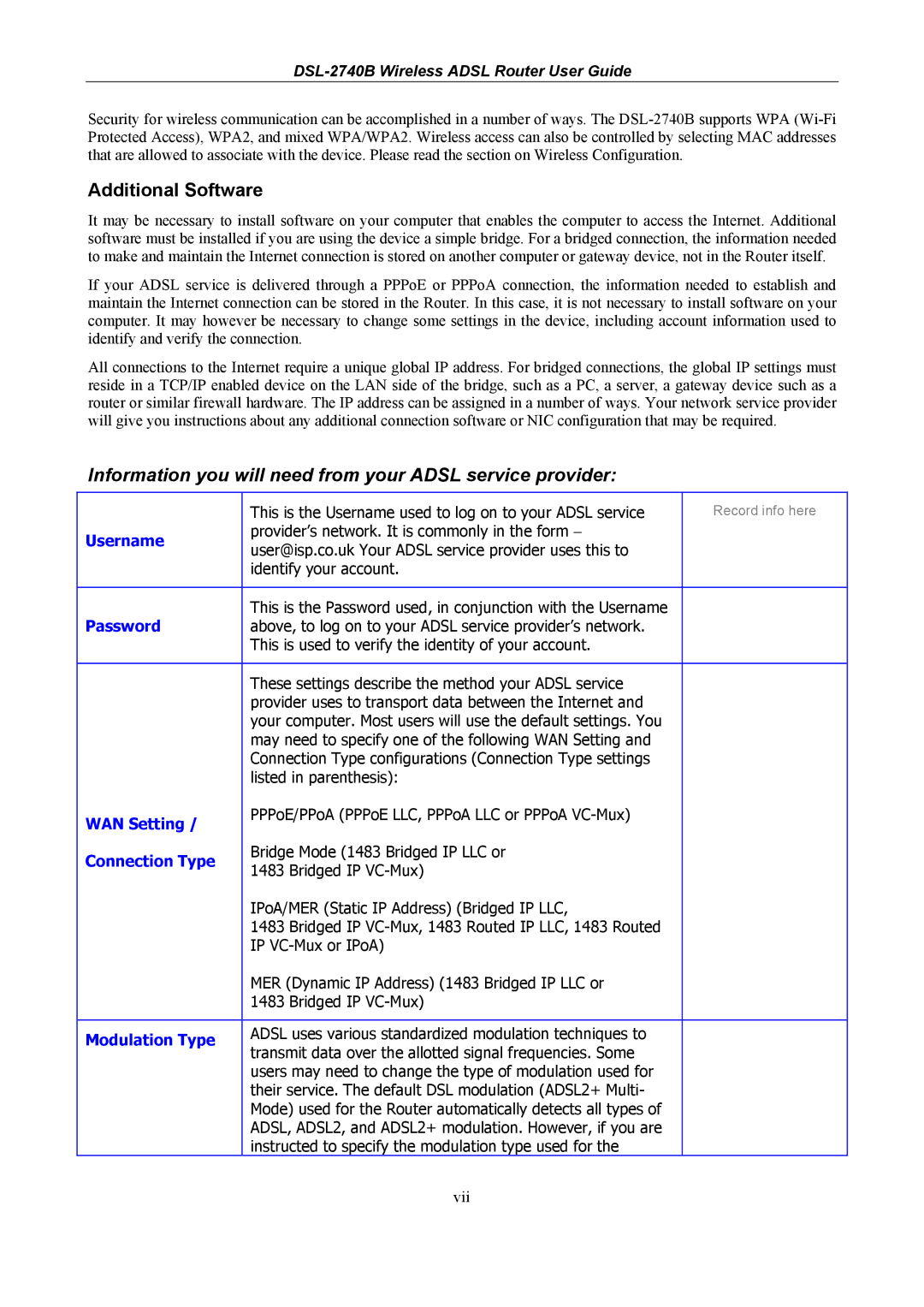Security for wireless communication can be accomplished in a number of ways. The
Additional Software
It may be necessary to install software on your computer that enables the computer to access the Internet. Additional software must be installed if you are using the device a simple bridge. For a bridged connection, the information needed to make and maintain the Internet connection is stored on another computer or gateway device, not in the Router itself.
If your ADSL service is delivered through a PPPoE or PPPoA connection, the information needed to establish and maintain the Internet connection can be stored in the Router. In this case, it is not necessary to install software on your computer. It may however be necessary to change some settings in the device, including account information used to identify and verify the connection.
All connections to the Internet require a unique global IP address. For bridged connections, the global IP settings must reside in a TCP/IP enabled device on the LAN side of the bridge, such as a PC, a server, a gateway device such as a router or similar firewall hardware. The IP address can be assigned in a number of ways. Your network service provider will give you instructions about any additional connection software or NIC configuration that may be required.
Information you will need from your ADSL service provider:
| This is the Username used to log on to your ADSL service | Record info here |
Username | provider’s network. It is commonly in the form − |
|
user@isp.co.uk Your ADSL service provider uses this to |
| |
|
| |
| identify your account. |
|
|
|
|
Password | This is the Password used, in conjunction with the Username |
|
above, to log on to your ADSL service provider’s network. |
| |
| This is used to verify the identity of your account. |
|
|
|
|
| These settings describe the method your ADSL service |
|
| provider uses to transport data between the Internet and |
|
| your computer. Most users will use the default settings. You |
|
| may need to specify one of the following WAN Setting and |
|
| Connection Type configurations (Connection Type settings |
|
| listed in parenthesis): |
|
WAN Setting / | PPPoE/PPoA (PPPoE LLC, PPPoA LLC or PPPoA |
|
|
| |
Connection Type | Bridge Mode (1483 Bridged IP LLC or |
|
1483 Bridged IP |
| |
|
| |
| IPoA/MER (Static IP Address) (Bridged IP LLC, |
|
| 1483 Bridged IP |
|
| IP |
|
| MER (Dynamic IP Address) (1483 Bridged IP LLC or |
|
| 1483 Bridged IP |
|
|
|
|
Modulation Type | ADSL uses various standardized modulation techniques to |
|
transmit data over the allotted signal frequencies. Some |
| |
|
| |
| users may need to change the type of modulation used for |
|
| their service. The default DSL modulation (ADSL2+ Multi- |
|
| Mode) used for the Router automatically detects all types of |
|
| ADSL, ADSL2, and ADSL2+ modulation. However, if you are |
|
| instructed to specify the modulation type used for the |
|
vii
